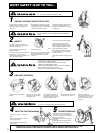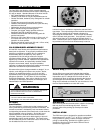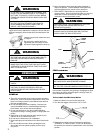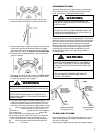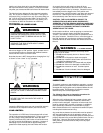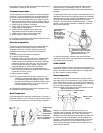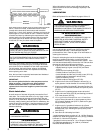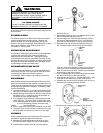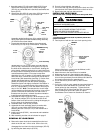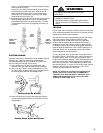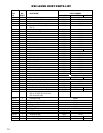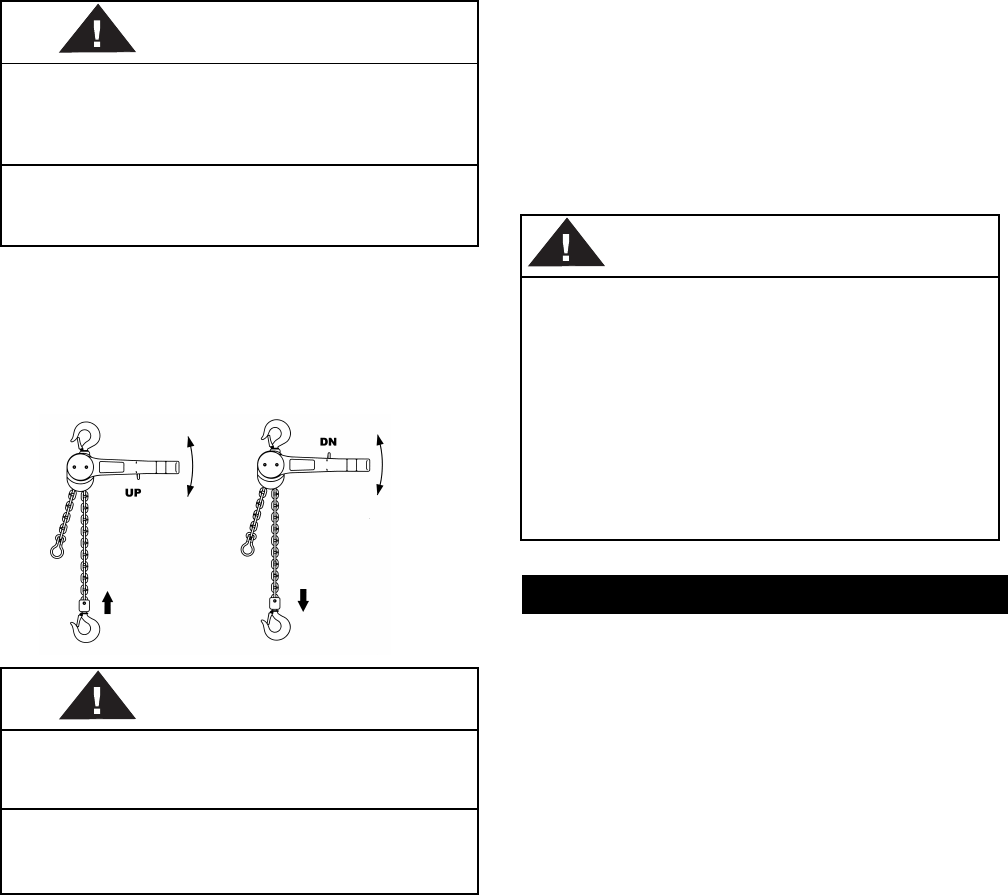
4
load the unit, then check to be sure that the attachments to
the hooks and load are firmly seated. Continue movement
only after you are assured the load is free of all obstructions.
The hoist has been designed for hand powered operation
only. Do not use an extension on the lever. Lever pulls of
45 pounds (21kg.) on the 3/4 ton unit, 55 pounds (25kg.) on
the 1-1/2 ton unit and 62 pounds (28kg.) on the 3 ton unit
will result in rated capacity on the unit. Any greater pull is
an indication of either an overload or an incorrectly
maintained unit.
TO LOOSEN OR LOWER LOAD
Move lever trigger to “DN” position. Again, operate lever in
an up and down motion to increase the distance between
hooks and thus loosen or lower the load.
Note that the cam is NOT changed when changing from “up”
to “down” or from “down” to “up” operation.
INSPECT THE RS2 LEVER HOIST
Inspect the RS2 before each use and at specified intervals
as directed in the inspection section (see next column).
LOAD LIMITER
®
The operation of a RS2 Lever Hoist equipped with a Load
Limiter is the same as described above. In fact, as long as
you are pulling or lifting loads that are within the rated
capacity of the hoist, the Load Limiter will not function and
you will not notice any difference in operation. However, if
attempting to pull or lift load that is approximately 20%
greater than rated capacity, the Load Limiter will function.
As a result, the lever will move but, there will be no
corresponding movement of the lower hook or load, when
the unit is operated in the “up” direction. Should this occur,
immediately move the trigger to the “DN” position and
operate the lever until the overload is set down and removed
from the unit. Reducing the load to rated capacity or less
will automatically return the hoist to normal operation.
CAUTION: THE LOAD LIMITER IS SUBJECT TO
OVERHEATING AND WEAR WHEN EXCESSIVELY
OPERATED. FOR THIS REASON, WHEN AN OVERLOAD
IS DETECTED, THE EXCESS LOAD MUST BE REMOVED
AS QUICKLY AS POSSIBLE WITHOUT CONTINUED
OPERATION OF THE LEVER.
Under certain conditions, such as applying an overload and
removing it by external means, the brake may become
“locked”. This results in not being able to operate the unit in
the “down” direction. Should this occur, move the trigger to
the “DN” position and give the lever a sharp pull and then
additional strokes to lower the load and remove tension from
the unit.
MAINTENANCE
INSPECTION
To maintain continuous and satisfactory operation, a regular
periodic inspection procedure must be initiated so that worn,
damaged and missing parts can be replaced before the unit
becomes unsafe. The frequency of inspection must be
determined by the individual application.
The following list gives an inspection procedure for
normal usage under normal conditions.
When the unit is subjected to heavy usage or dusty, gritty,
moist or corrosive atmospheric conditions, shorter time
periods must be assigned. Inspection must be made of all
parts for unusual wear, corrosion or damage, in addition to
those specifically mentioned in the schedule on page 5.
Make certain that the unit is complete and contains all parts
including hook latches and end ring.
Any parts that are deemed unserviceable must be replaced
with new parts before the unit is returned to service. It is
very important that the unserviceable parts be destroyed and
properly disposed of to prevent their possible future use as a
repair item. Use only Yale Hoist supplied repair parts as
other parts may look the same but may not be to proper
specifications.
WARNING
POWER OPERATION MAY CAUSE STRUCTURAL
DAMAGE OR PREMATURE WEAR THAT IN TURN
MAY CAUSE A PART TO BREAK AND ALLOW THE
LOAD TO FALL.
TO AVOID INJURY:
OPERATE THE RS2 LEVER HOIST USING
HAND POWER ONLY!
WARNING
TURNING THE CAM WITH A LOAD ATTACHED WILL
ALLOW THE LOAD TO RELEASE AND MAY CAUSE
INJURY.
TO AVOID INJURY:
NEVER TURN THE CAM WHEN THE HOIST IS
UNDER LOAD.
WARNING -
TO AVOID INJURY:
Use as directed above. Failure to do so may cause
injury to you or others.
1. Do not exceed capacity shown on frame or lower
hook block.
2. Do not use to lift people or loads over people.
3. Do not use unless the hoist’s frame and chain form
a straight line between hooks.
4. Do not use if the frame is in contact with any object.
5. Do not use if the unit is damaged or malfunctions.
6. Do not use extension on lever. Use hand power
only.
7. Do not use if chain is twisted, kinked or damaged.






